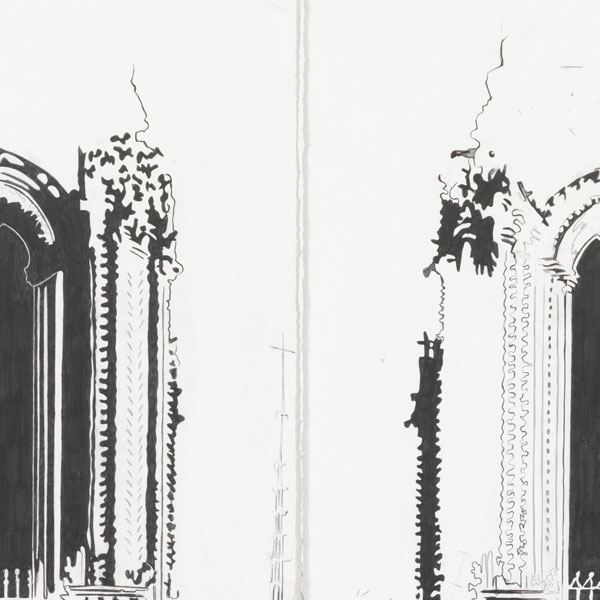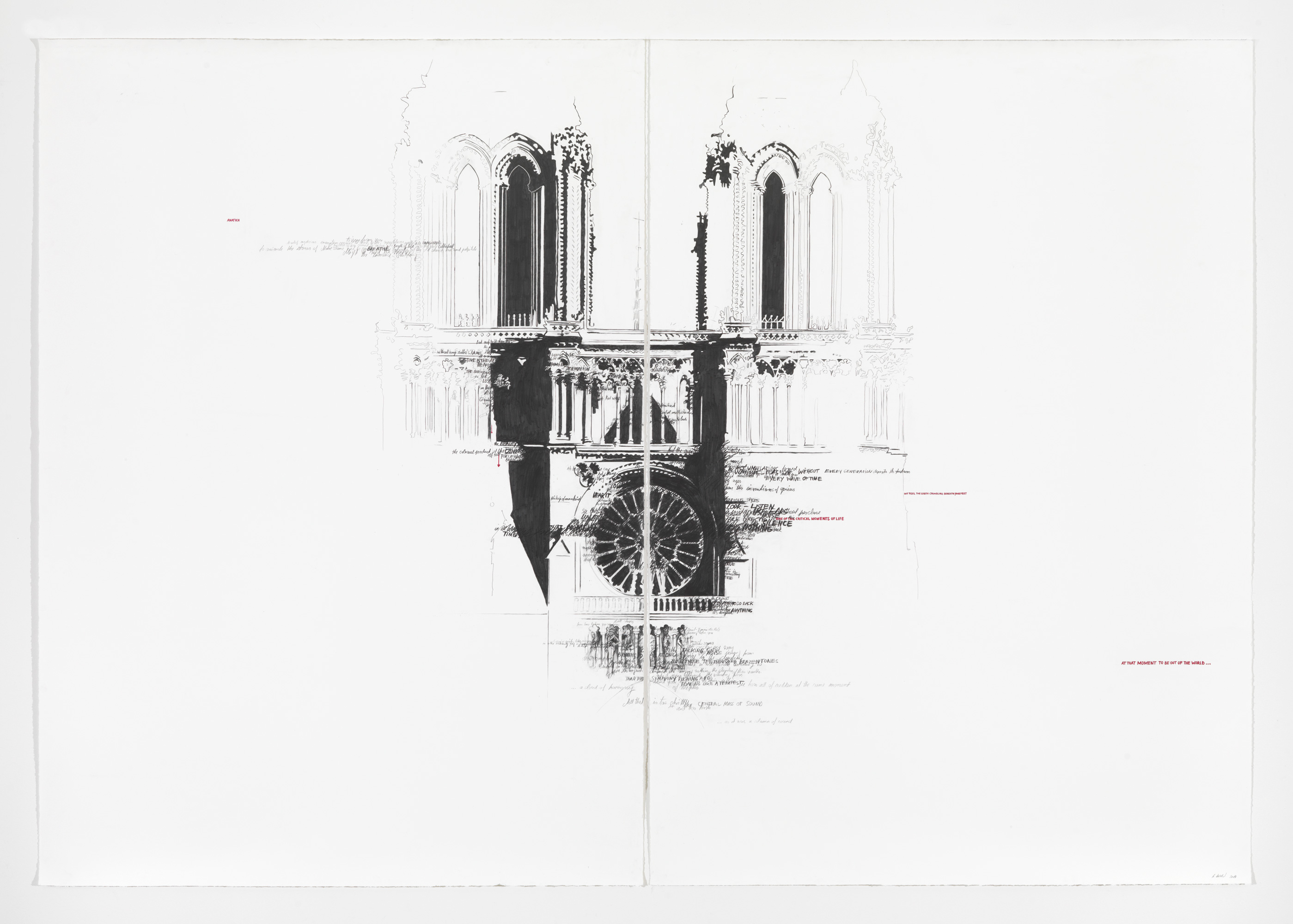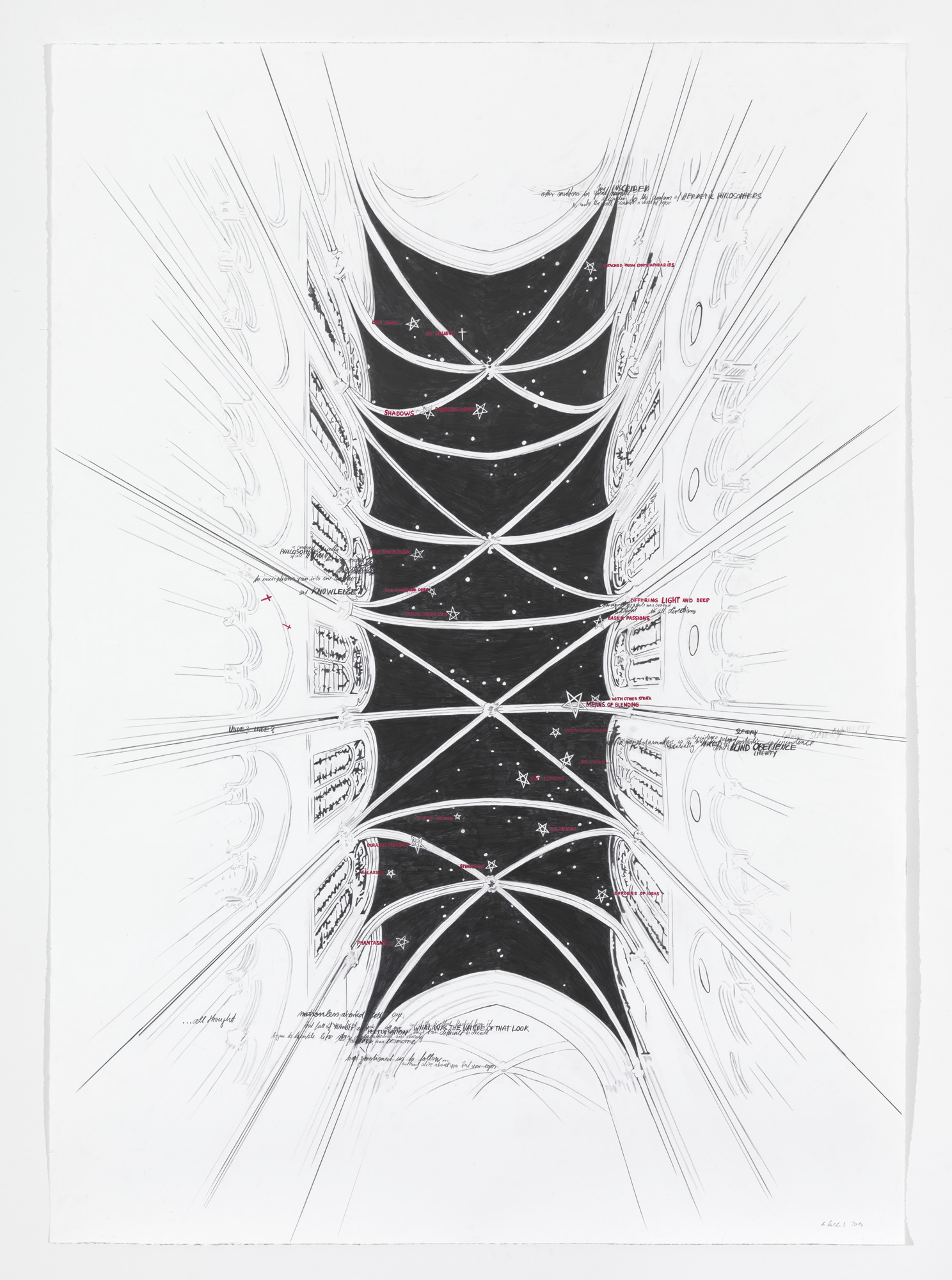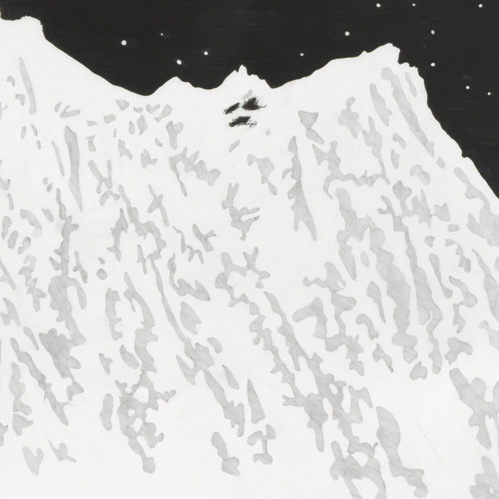Animation, Balance, Infinity
The novel by Victor Hugo, Notre Dame de Paris, includes in its title the year 1482.
It is a historical novel, which, published in 1831, brings to life a world of the past, the Middle Ages, as a panorama of words.
This work does not address an imagined archaeology, but rather eternally virulent themes such as love, passion, isolation, belief, power, state, church, and the highly topical issue of (church) asylum.
ANATKH or Ananké – meaning doom or destiny – unites the figures in Hugo’s novel and people in general with time and history.
The Notre Dame de Paris cathedral is at the heart of Victor Hugo’s eponymous work. It is not only the setting but also the sum of all the novel’s characters: for the first time in literary history a building is the protagonist. In the drawings “Animation,” “Balance,” and “Infinity” this place is filled with enigmatic life that becomes visible in clouds of textual citations that float through the architecture.
Viktor Hugo wanted to create an “ideal” novel that was “both drama and epic”. The structure of this epic work – in addition to the content – can be understood as a drama that follows a well-considered design principle.
Elements of disappearance and fragmentation re-appear in words and loosen the bond of great architecture from purely religious functions. The cathedral is transformed into a virtual object of art, culture, and contemporary history of the past to the present.
BW
Balance (diptych), 2015
Graphite, gouache, pigment pen on handmade paper
195 × 280 cm
Years appear in red from the depths of the “historical space” and in the diptych structure the cathedral interior, going back from the present (2015) to the laying of the cornerstone of the church (1163):
The citations in the text clouds here refer mainly to the description of the cathedral as an architecture that “lives and breathes”.
The real symbolism of the colors of the cathedral’s stained glass windows is absorbed by the text in the picture and re-emerges from the same. Each color develops its own range of meaning, from existential to spiritual.
Red stands for life, symbolizes love, but is also the color of the devil.
Yellow is the color of sunlight and thus also a symbol of heaven.
Blue stands for transparency and clarity of thought.
In the battle against evil, white and blue unite (light blue).
Violet is a blend of red and blue and stands for prudence and the high feasts. During the Middle Ages the robe of Jesus in his Passion was depicted in violet.
Green is the color of spring. It represents new life and hope, but can also be the color of the devil, who stands between the red of Hell and the blue of Heaven.
Animation (diptych), 2015
Graphite, gouache, pigment pen on handmade paper
195 × 280 cm
…To animate the stones of Notre Dame.
Anatkh – doom. For Victor Hugo the story of his main characters ends tragically. The gypsy Esmeralda is executed, and the hunchback Quasimodo recognizes the guilt of his master Claude Frollo at this execution and pushes him from the tower gallery into the depths.
Frollo at this point is no longer the chaste and devout churchman. In his wish to transcend the limits of religious knowledge he turns to alchemy. This thirst for knowledge not only alienates him from the church, but also causes him to falter in his moral convictions. He falls like the figure from the Gallery of Kings in the picture – the conflict between religion and life remains.
Infinity, 2015
Graphite, gouache, pigment pen on handmade paper
195 × 140 c
The Gothic cross vault is transcended and reveals a view of an imaginary night sky. The constellation includes pentagrams that divide the view into infinity.
The pentagram is probably the most recognized symbol of magic and mysticism. It represents the four elements – fire, water, air, and earth – surmounted by the spirit. Inverted, the symbol becomes a “drude’s foot,” a sign of evil, and the points become the horns of a devil’s mask.








